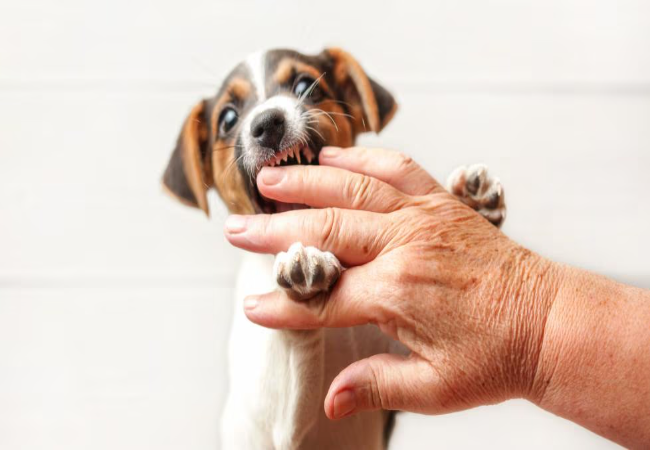Stop Puppy Chewing (2025): Vet Approved Strategies to Protect Your Home & Pup 🐶

In this article
Stop Puppy Chewing (2025): Vet-Approved Strategies to Protect Your Home & Pup 🐶
By Dr. Duncan Houston BVSc
🔍 Why Puppies Chew—and It’s Totally Normal
Puppies explore and learn using their mouths—it’s how they investigate new textures, tastes, and shapes. Chewing is also a joyful play behavior, especially when they discover it’s fun or relieves teething pain. It keeps their jaws strong and helps clean their teeth.
✅ Step 1: Puppy-Proofing Your Home
Prevention starts before chewing happens:
- Confine unsupervised pups to a safe, puppy-proofed zone with chew-appropriate toys, water, bedding, and a crate.
- Remove temptations—shoes, cords, plush, anything you don’t want destroyed.
- Use aversives (bitter sprays, sticky tape, visual barriers) on off-limits objects for gentle deterrence.
🧸 Step 2: Choose the Right Chew Toys
Not all toys are suitable—here’s how to pick smart:
- Offer a variety: hard rubber (KONG Puppy), teething ropes, textured toys, and frozen comfort toys.
- Rotate toys frequently to maintain novelty and interest.
- Freeze safe toys or carrots to soothe teething gums, providing natural pain relief.
- Supervise to prevent ingestion—dispose of worn or broken toys immediately.
🎯 Step 3: Interrupt & Redirect
When you catch yourself chewing the wrong items:
- Use a calm “no,” then swap with a chew toy enthusiastically.
- Praise and engage when they chew appropriate items—make good behavior rewarding.
- Avoid yelling or punishment—it confuses the pup and can harm trust.
🧠 Step 4: Enrichment & Exercise to Prevent Boredom
Boredom and pent-up energy drive chewing:
- Provide daily physical and mental stimulation—walks, fetch, puzzle toys, and chew enrichment.
- When leaving, offer interactive feeders or food puzzles to keep them occupied.
🍼 Step 5: Manage Teething Pain
Puppies begin teething around 2 weeks; pain peaks around 3–6 months.
- Offer frozen toys or healthy chews to numb gums.
- Rotate teething toys to keep interest high and satisfy chewing needs.
- Practice soft-mouth training—withdraw attention if they bite hands or feet, then redirect to toys and praise quiet chewing.
⚠️ Step 6: Rule Out Anxiety & Health Issues
Consider these when chewing is excessive or sudden:
- Medical checks: dental pain, GI issues, and pica should be ruled out.
- Assess anxiety triggers—separation anxiety or stress might manifest as chewing.
- Work with vet or trainer for behavior plans if chewing persists under stress.
📋 Dr Houston’s Puppy-Chewing Checklist
- ✔️ Puppy-proof environment & remove hazards
- ✔️ Provide a rotation of safe chew toys, including frozen options
- ✔️ Calmly swap forbidden items & praise good chewing
- ✔️ Ensure daily physical and mental stimulation
- ✔️ Support teething with soothing toys & soft-mouth training
- ✔️ Monitor stress-related behaviors and seek vet if needed
- ✔️ Supervise chew time and discard damaged toys
- 📱 Ask A Vet app is ready to support training and anxiety issues anytime
🌟 Final Thoughts
Chewing is a natural and necessary stage in a puppy’s development—but with the right tools and guidance, you can direct that energy into positive habits. Create a safe environment, offer engaging, soothing chew options, and provide love, exercise, and consistency. For stubborn chewing, teething pain, or anxiety issues, Ask A Vet is here with expert, personalized support. 🐾❤️
Need help choosing safe chew toys, planning enrichment, or dealing with puppy anxiety? Visit AskAVet.com or download the Ask A Vet app—support from real vets anytime, anywhere! 📱🐶






